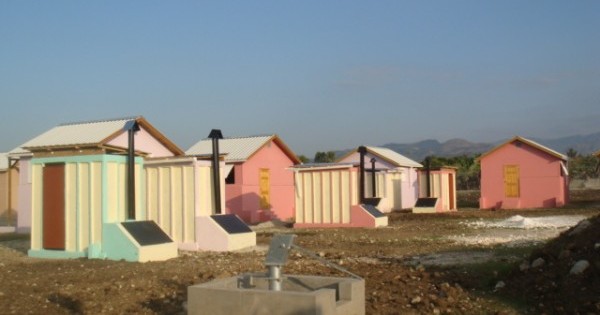
We in the industrialized world have a toilet problem, and folks in the developing world have a different toilet problem. Our antiquated plumbing technology squanders gallons of potable water with every flush. Technological solutions, such as a NoMix toilet being tried in Europe, center on the fact that urine is pure whereas feces are crawling with pathogens. The two should be processed separately. In many parts of the developing world, proper toilets are lacking altogether. And in places where both water and waste management infrastructure are lacking, our antiquated plumbing technology is no solution. Low-water toilets that re-purpose waste is an idea whose time has arrived. Let’s talk.
In the developing world, 2.6 billion people have no toilet at home and no access to safe sanitation. Of these, one billion still defecate out in the open, where flies crawl on feces before crawling on food. Fecal-matter-tainted food and water cause diarrheal diseases that kill 1.5 million children each year. Patients dying of feces-carried diseases fill the hospitals. Girls and women are exposed to risk of assault when they must defecate in the open or use public latrines at night. Girls miss school when they are menstruating and at puberty are often withdrawn from schools that lack proper, sex-separated sanitary facilities.
I learned much of this from the Reinvent the Toilet Challenge issued by the Seattle-based Bill & Melinda Gates Foundation. The foundation granted funds to scientists, engineers, and designers to invent a toilet that (paraphrasing the challenge):
- everyone will want to use (no stink, no flies, culturally appropriate);
- works off grid (no sewer lines, water mains, or electrical connections);
- removes pathogens such as E. coli from human waste and recovers that part of excrement useful for power generation or fertilizer;
- costs less than 5 cents per use;
- promotes models for small businesses in poor urban areas, businesses that would offer sanitation services and sell purified feces-fuel or purified feces-fertilizer.
The top winner of this challenge (in August 2012) was a CalTech team whose toilet provides a seated commode, a squat commode (squatting is healthier and common in many cultures), and a urinal. This toilet is solar powered, and treats waste in an electrochemical reactor that generates hydrogen, electricity, and pathogen-free water that can be used to wash or to irrigate crops.
New technology is exciting but no one imagines that technology by itself is the answer. Governments, NGOs, and individuals must get involved. The worldwide problem of human excrement is already a focus of UNICEF, the World Health Organization, and the World Toilet Organization.
And while we’re talking toilets, I move that we repeal our repugnance for the Old English word shit. In an essay titled “A Load of Shit,” English novelist, art critic, and essayist John Berger tells about performing his annual duty of shoveling out the family outhouse. He argues that shit “has nothing to do—as Puritanism with its loathing for the body has consistently taught—with shame or sin or evil. Its colours are burnished gold, dark brown, black: the colours of Rembrandt’s painting of Alexander the Great in his helmet.” Berger is a masterly writer, and his graceful and deeply philosophical essay manages to use the word shit 18 times.

